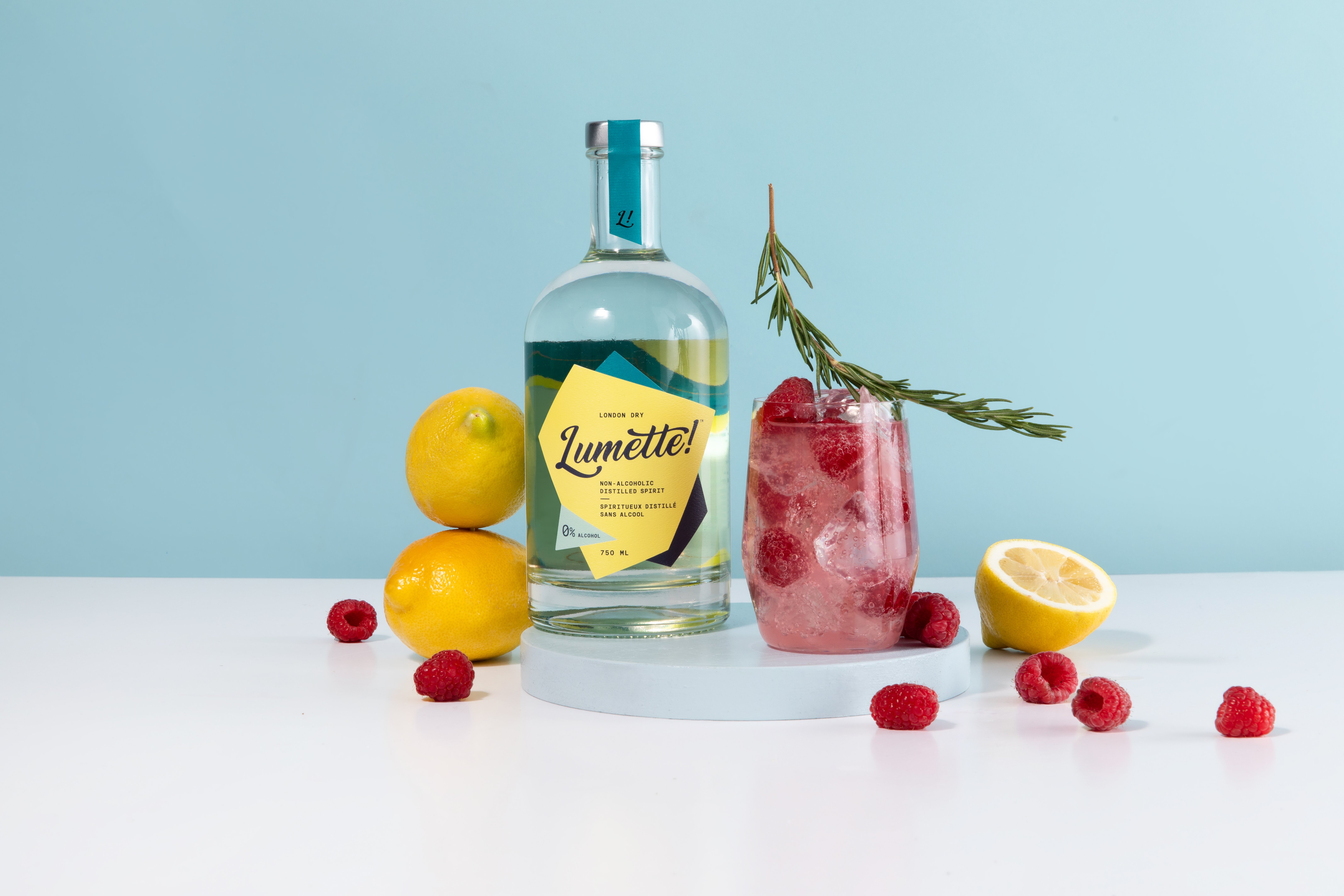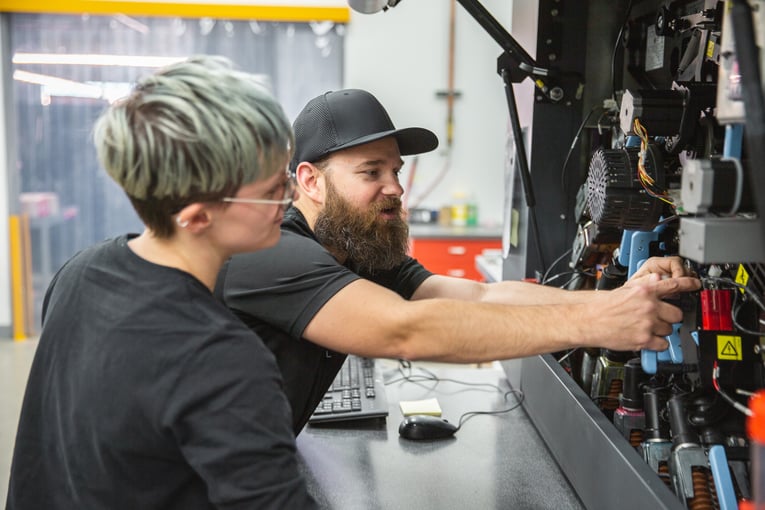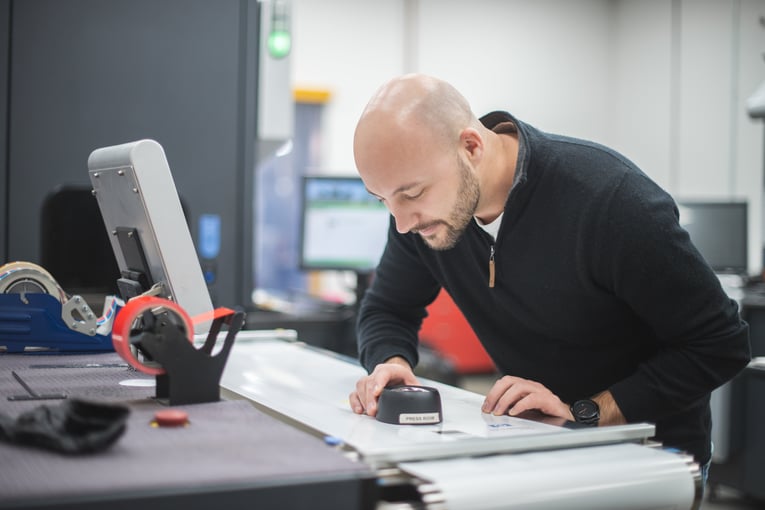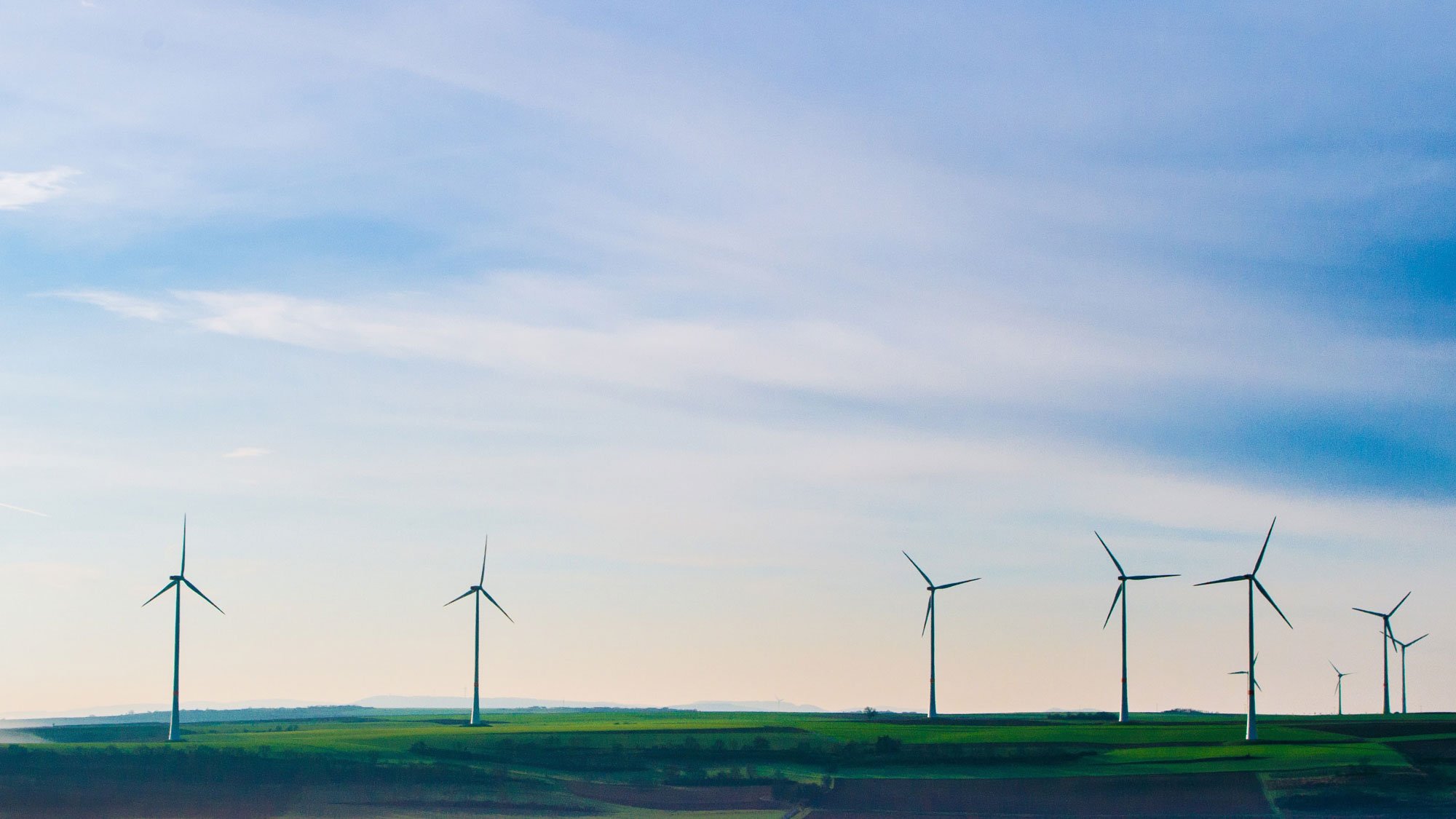Have you heard of climate change? It’s on everybody’s lips these days, kind of like a cool new brewery that just opened, except it’s not cool, it’s awful and we hate it.
Climate change sucks and admittedly printing and packaging companies have been contributors to it for a long time. But in today’s society, it’s hard to imagine life without coming across the products from these industries. As digital as we have become, paper and ink are still abundant.
As such, many of us label printers are recognizing that just like Spider-Man, we have immense responsibility: to do right by our global (and local) community, to provide new solutions that help our customers reach their goals and to cut down on the carbon footprint we leave behind.
In this post, we’re going to explore all the ways that you can print labels in a more eco-friendly way, all while providing a seriously Instagram worthy product.
What is sustainable printing?
Sustainable printing refers to methods printers use to minimize the impact they have on the environment. Specifically, sustainable printing is an intentional effort to reduce greenhouse gas emission and other pollutants, minimize waste, and lower energy consumption all while increasing the biodegradable or recyclable nature of the end product.
There are three main ways to do that:
- Choosing greener products
- Switching to greener technologies
- Adopting greener processes
1. Choosing greener products
Stock
For any fans of Dwight Schrute, we want to say: Paper is the bread of the printing industry.
The paper, or stock, or substrate you use can have a huge environmental footprint and that’s our first stop on this train to making your labels more sustainable.
There are a few ways that what’s called virgin paper is really bad for the environment. It comes down mostly to water pollution, air pollution, deforestation and waste.
To make paper, you need a significant amount of natural resources: trees, water, oil, electricity. On top of that, the traditional pulping process requires some not-so-great chemicals: bleach, solvents, acids, dyes, chlorine.
This pulping process generates greenhouse gases as well as waste that gets released into effluents and seeps into our aquifers, contaminating our water supplies.
If that wasn’t enough, do you know where a large quantity ends up? In our landfills. The average Canadian uses 308 kg of paper a year and a lot of it ends up in landfills where it slowly decomposes and what happens when it decomposes? It releases methane into the atmosphere.
(Pssst. Methane is a greenhouse gas. It’s not great.)
So paper is a bit of an issue. Not to worry. Here are some alternatives to virgin paper you can use instead so that we’re cutting down fewer trees, polluting our air and water a lot less and reducing the amount of waste we’re currently producing.

Recycled stock
PCW (post-consumer waste) fibres are made using recycled products, whether paper or plastic. You know that stuff you take to your blue bins? That’s not a waste of your time. It gets taken to a facility where it gets turned into new paper, new plastic, without ALL the awfulness you get from making virgin paper.
The process emits 38% less greenhouse gases, uses 44% less energy and requires 80% less water, so that’s a lot better.
A PCW product will have a percentage next to it, indicating the amount of recycled products that went into. The good news is you can find labels made with 100% PCW and we offer a number of options to select from.
FSC-certified paper
If recycled paper product doesn’t suit your needs, there are many Forest Stewardship Council (FSC) certified stocks that are available. FSC is an international mark of well-managed forest operations. This certification ensures the raw wood used to make the paper is legally sourced and comes from sustainably-managed forests.
But with only about 10 percent of the world’s forests certified by FSC and other programs, there’s still a lot of work to be done. For paper-based materials, we only work with suppliers who offer FSC certified products.
Tree-free paper
Another option is to completely bypass the little problem of deforestation by taking trees out of paper entirely. There are some great alternatives, each with their own pros and cons.
- Cotton paper—sometimes referred to as rag paper—is made using either cotton linters or cotton from used clothes, like the ones you might drop off at your nearest H&M. Cotton paper is super durable, able to last hundreds of years without significant deterioration and because of that, important documents often get printed on it. Or maybe...important labels...
- Sugar-cane paper is made using a fibrous material that remains after crushing sugarcanes in the production of sugar. The supply is renewable and requires less energy to produce while generating fewer greenhouse gases and waste.
- Stone paper is a little wonder that’s made from calcium carbonate, which is one of the most frequent substances on the planet. It’s the stuff that makes up pearls, eggs and snail shells. Though it does require the use of a small amount of plastic (HDPE) as a binder, the process to make stone paper eliminates trees, water, chlorine, acids or petroleum. All the really bad stuff.
Compostable labels
The holy grail of eco-friendly label stocks and the one that we get the most questions about has got to be compostable labels.
What could be better than a product that breaks down and degrades on its own into carbon dioxide, inorganic compounds, biomass and water in about 90 days? Put some leaves or paper out in your backyard and watch the magic happen. It all sounds great, but it’s a challenging task to accomplish in labels and packaging in general.
After all, you probably want your newly launched line of new gluten-free mini avocado toast snacks to have the required shelf life stability that packaging is normally used for to protect and store the contents inside. Ideally the product should be used by the end consumer prior to any chance of the package degrading.
We’ve done a whole bunch of research to source two new stocks made from compostable materials. Each have compostable adhesives certified to meet the European Standards for compostable packaging, EN13432. One stock is made with a semi-gloss FSC-certified paper and the other is made with the sugar cane paper we referenced earlier. As more options become available, you better believe we’ll be offering them.
2. Switching to greener technologies
Printers
It’s not just the materials employed in printing labels that is going to help you reduce your environmental footprint on your next project. The machines you use to print your labels make a big difference too.
In the past, printers consumed a lot of energy and created a lot of waste. Nowadays, whether you’re using flexographic or digital, there are options to reduce waste and energy consumption in ways we couldn’t have imagined ten or twenty years ago.
As Aladdin and Jasmine would say, let us share this whole new world with you...
Flexographic printing
Flexographic printing is a method where you use flexible printing plates (these used to be made of rubber, now they’re made of a flexible photopolymer), wrapped around cylinders on a web press.
Rotating at high speeds, they transfer the ink (one colour per plate) by making impressions onto the substrate. At the end of the job, the plates can be wiped and reused over and over again, which is great.
The biggest issue with traditional flexographic when it comes to environmental sustainability is costly setup and proofing processes along with waste management.
With advanced computer to plate technology and digital workflows, these days printers can easily eliminate costly and wasteful proofing processes while automated plate cleaning systems provide advanced solutions to clean plates in closed loop recirculation systems.
Or you could go digital...
Digital printers
Digital printers sing on sustainability. Here’s why.
In a way, our digital printers operate like your office printer at home (only much bigger). There are no physical printing plates involved in digital printing. There’s also significantly less set-up than with flexo, no matter how far that process has come.
What this means is you get shorter lead times, yes, but especially and a whole heck of a lot less wasted material.
At Summit Labels, we use HP Indigo digital presses, considered the most advanced when it comes to energy consumption, recovery, oil recycling, waste management and quality. Plus, all HP indigo press manufacturing is carbon-offset (CO2 neutral).
Say goodbye to bulk printing
Another factor that comes into play in any discussion about sustainability is the excess amount that companies print in order to benefit from the economies of scale, while speaking to as large an audience as possible.
- Variable content allows you to provide personalized brand messages that can be triggered based on the data you provide. This is a powerful way to hyper target your message through a single campaign or project based on the audience you’re trying to reach. It allows you to print shorter runs with faster turnaround times.
- Group run printing gives you the ability to print different labels at one time. This cuts down on your setup time and thus reduces the amount of waste involved.
- On-demand printing lets you print your labels to order so you have no wasted stock or excess materials left over.
3. Adopting greener processes
This last method of embracing more sustainable printing methods is more about the individual printers you do business with. Every organization in the 21st century has a carbon footprint. If moving towards a more sustainable world is something that’s important to you, you can look at the culture that your printers promote.
Delivery
Transportation accounts as the primary source for greenhouse gas emissions. Yep, all those cars on the road. Of course, we don’t have wormhole technology yet that allows us to open a gateway in spacetime and deliver your printed labels to you. And if we did, it’s questionable that would be a more sustainable option…(we make roughly 10,000 deliveries a year; can you imagine the disruption to spacetime that would create???)
So we have to get them to you. Somehow. And if that can happen while not releasing a ton of greenhouse gases into the atmosphere for our children to clean up, that’s great. That's why at Summit Labels, we’ve made a major change in our business and now provide all deliveries via an all-electric delivery fleet in Metro Vancouver.
We're also looking to expand this new program in other cities across Canada as more partnership opportunities become available. So stay tuned for green delivery options near you.
Culture
Operating an office leaves an impact. We know, it’s a bit exhausting how everything anyone does seems to do that.
Fortunately, we’re not powerless (pun most definitely intended). Replacing the lighting in an office building with high-efficiency LED bulbs can reduce energy usage by 70%. Some printers go further by installing solar panels to provide a clean energy source.
Or, think about this: the average office worker uses 10,000 sheets of paper a year. Cutting down on the amount of paper products by switching over to digital processes is a great way to lower that impact.
By cultivating a culture that reduces waste and increases efficiency, printers can help further reduce their environmental impact.
The road to sustainability
A big question that remains is, what’s the cost of these sustainable alternatives for you? Do you have to pay more for a greener product?
While a lot of options we’ve explored might be comparable to the traditional products (and some are cheaper), some materials, it's true, do cost more.
But that's where a good printer comes in. If you want the most sustainable option possible, they will help you find ways to offset that cost.
The journey to sustainability is a long one. It’s not about identifying a couple of easy, obvious ways to earn a badge (that’s called greenwashing). It’s not about replacing one bad product with a more environmentally-friendly option.
True sustainability is transformative. It looks at the systems that are in place that are wasteful and destructive and, through innovation and continuous improvement, it makes them more economical.
Sustainability requires a change in mindset, where profits are only an achievement if it’s not at the expense of people or the planet. Sustainability is about creating a growing ecosystem that allows us to thrive without sacrificing the livelihood of future generations.
That’s our goal and we’re taking steps every day to live and breathe these ideals.
Are you ready to join us on the road to sustainability? Get in touch with our Label Solutions Specialists for more tips and tricks to help you bring sustainable options to your product line.

.jpg?width=2000&name=0I8A5159%20(1).jpg)




Follow Us